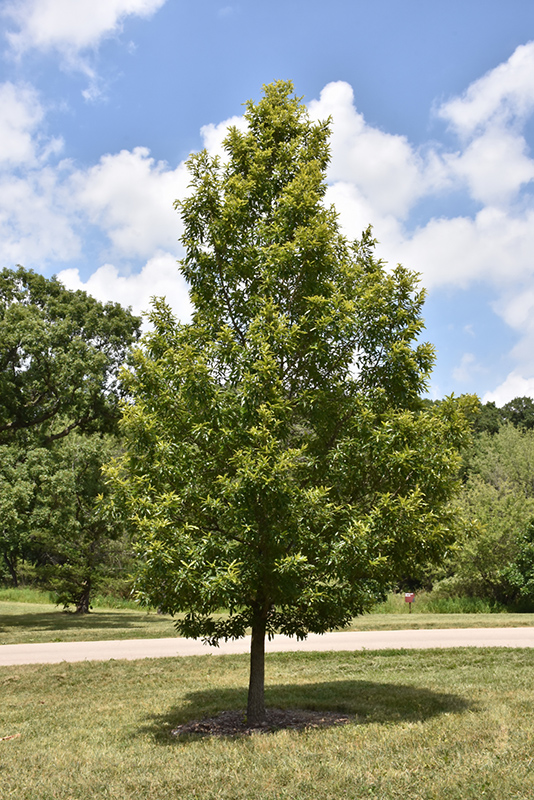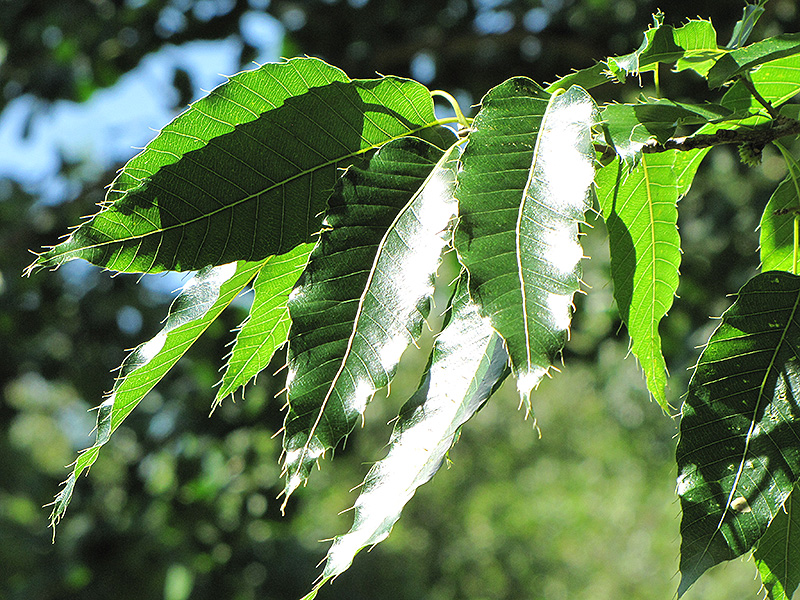>> Home
Height: 50 feet
Spread: 50 feet
Sunlight:
![]()
Hardiness Zone: 5a
Description:
A magnificent shade tree with a shapely upright-oval habit of growth and interesting bark, best for larger landscapes; extremely tough and adaptable, but needs acidic soil, leaves tend to remain into winter
Ornamental Features
Sawtooth Oak has dark green deciduous foliage which emerges lime green in spring on a tree with an oval habit of growth. The serrated narrow leaves turn an outstanding harvest gold in the fall. However, the fruit can be messy in the landscape and may require occasional clean-up.
Landscape Attributes
Sawtooth Oak is a deciduous tree with a shapely oval form. Its average texture blends into the landscape, but can be balanced by one or two finer or coarser trees or shrubs for an effective composition.
This tree will require occasional maintenance and upkeep, and is best pruned in late winter once the threat of extreme cold has passed. It is a good choice for attracting squirrels to your yard. Gardeners should be aware of the following characteristic(s) that may warrant special consideration;
- Messy
Sawtooth Oak is recommended for the following landscape applications;
- Shade
Planting & Growing
Sawtooth Oak will grow to be about 50 feet tall at maturity, with a spread of 50 feet. It has a high canopy with a typical clearance of 6 feet from the ground, and should not be planted underneath power lines. As it matures, the lower branches of this tree can be strategically removed to create a high enough canopy to support unobstructed human traffic underneath. It grows at a medium rate, and under ideal conditions can be expected to live to a ripe old age of 250 years or more; think of this as a heritage tree for future generations!
This tree should only be grown in full sunlight. It prefers to grow in average to moist conditions, and shouldn't be allowed to dry out. It is not particular as to soil type, but has a definite preference for acidic soils, and is subject to chlorosis (yellowing) of the foliage in alkaline soils. It is highly tolerant of urban pollution and will even thrive in inner city environments. This species is not originally from North America.

